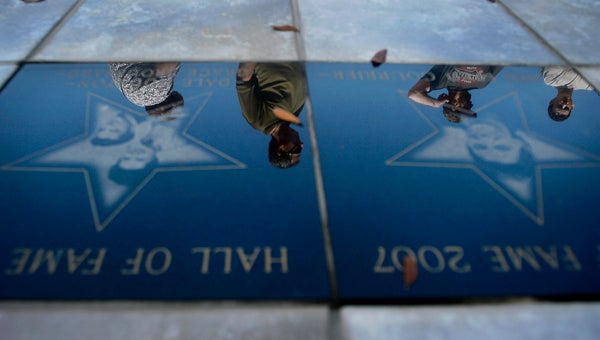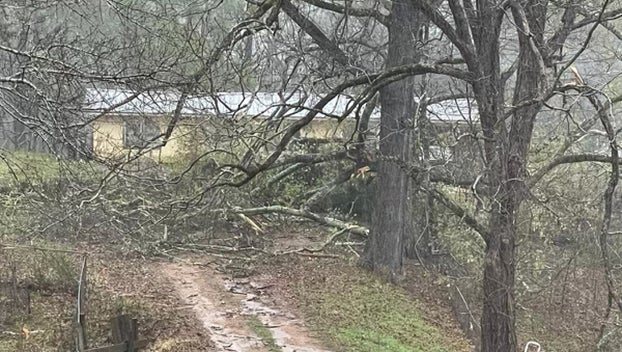Labor Day spent cleaning up in La.
Published 11:43 pm Monday, September 3, 2012
BATON ROUGE (AP) — The traditional Labor Day barbecues were replaced in many communities with debris removal and damage assessments, as parishes continued to dig out from Hurricane Isaac.
More than 105,000 homes and businesses across Louisiana remained without power Monday, six days after the slow-moving storm came ashore. More than 2,500 evacuees were still in shelters, as waterways bulging with Isaac’s rain and storm surge persisted.
There were small signs that conditions were slowly improving. Schools prepared to reopen today. Plaquemines Parish officials allowed some residents in to view the storm damage in the hard-hit parish where water remained up to four feet deep in some areas. FEMA was inspecting damage and taking applications across nine parishes for grants to help with housing and fill in insurance gaps.
Portable showers were set up for residents of LaPlace, a city about 30 miles west of New Orleans that experienced among the worst flooding damage. Not far away, a mobile van took insurance claims.
Residents there stood in line at a makeshift relief center set up under a tent in the Home Depot parking lot. As she held a bag of relief supplies, Dawn Brady, 43, couldn’t hold back the tears.
“I’m so emotional, so sad. I know it’s going to be a long road ahead,” said Brady, whose 45-year-old house took in nearly four feet of water.
People dragged waterlogged carpet and furniture to the curb, pushed mud and debris out of homes with brooms and scrubbed walls and floors with bleach in the hopes of preventing mold.
In St. James Parish, officials monitored water levels in a handful of streets that threatened to flood homes. While the water wasn’t rising, “it’s just flowing and spreading,” said parish spokeswoman Melissa Wilkins.
Cars weren’t expected to be able to drive down the main highway in rural Plaquemines Parish for another five to seven days, according to parish officials.
More than 20 breaches had been scoured into the local levees to help drain water in the vulnerable finger of land that juts into the Gulf of Mexico, and the parish brought in pumps to help empty the floodwaters.
On the north shore of Lake Pontchartrain, across the lake from New Orleans, St. Tammany Parish officials kept watch over potential trouble spots along Isaac-swollen waterways.
St. Tammany authorities said the Pearl River was expected to crest Tuesday night. The improved forecast has the high river level expected as the lake’s water level is falling, which could lessen damage and speed draining. About 5,000 homes are near the waterway.
Evacuees still in Louisiana shelters were expected to be moved closer to home, starting this week. FEMA will pay for residents whose homes were rendered uninhabitable by Isaac to stay in hotels, while they find rental units, said Christina Stephens, a spokeswoman for the Governor’s Office of Homeland Security and Emergency Preparedness.
“The goal is really to get people back to their communities. We know from past experience that if people are back in their communities, they’re able to rebuild more quickly,” she said.
Power was restored to all but 5 percent of the utility customers in the state, according to the Public Service Commission. At one point after Isaac struck, outages neared half the homes and businesses around Louisiana.
While residents celebrated their utility restoration, several nursing homes in hard-hit areas remained on generator power, and some of the most devastated communities in Plaquemines Parish weren’t expected to get electricity for another four to six weeks, according to Entergy estimates released by the parish.
New Orleans operated emergency cooling shelters for those without power as temperatures topped 90 degrees.
“As the power continues to return, our residents must continue to be vigilant,” New Orleans Mayor Mitch Landrieu warned. “Roadways without traffic signals continue to be a hazard. Generators and candles continue to be a risk.”
Louisiana’s social services department began accepting pre-applications for emergency food stamps, a program set to begin Wednesday for those who don’t normally receive the federal aid but need help buying groceries.
At least seven people were killed in the storm in the U.S. — five in Louisiana and two in Mississippi.
Damage estimates were still hard to come by from state agencies, but the LSU AgCenter pegged a rough estimate of at least $92 million in damage to crop yields, including losses in sugar cane, rice, corn, cotton and sweet potatoes — without counting livestock losses or increased production costs.
FEMA said it has doled out nearly $2 million in aid to residents, a price tag expected to grow. More than 65,000 people in Louisiana have registered for FEMA assistance, Stephens said.






